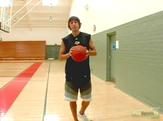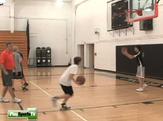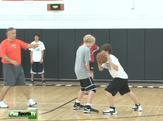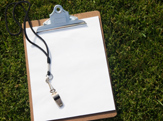PlaySportsTV Basketball
The 10 Most Important Youth Basketball Rules
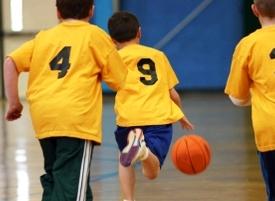
Coach basketball dribbling rules to beginners.
Youth basketball coaches want get beginners to learn the game
By Craig Haley
PlaySportsTV Managing Editor
There are a number of fouls and violations that youth basketball coaches have to teach beginners, but it’s best to start off teaching the main basketball rules. Instilling strong fundamentals at a young age is a key to developing players.
A coach’s hardest job might be getting youth basketball players from committing a foul or dribbling the ball improperly. Get the players in the game by instilling these 10 important basketball rules:
(Teach the best coaching techniques through PSTV training plans. Here's a great Triple Threat to ball handling video to reinforce good fundamentals.)
Scoring. Beginners won’t shoot a lot of 3-pointers, but have them to understand a free throw is worth one point, a field goal is worth two and a 3-pointer is good for three points.
Tip-off/jump ball. The game begins with two opposing players in the center circle, each jumping to tip the basketball that the referee tosses up. The team that does not gain the tip-off gains the possession arrow and will be awarded the basketball the next time it is tied up between opposing players. The teams will switch off with the possession arrow on every jump ball situation or at the beginning of a quarter or half. A jump ball will only be used again at the start of an overtime period. The possession arrow will be used during overtime periods.
Dribbling violations. Yes, there are many. A dribbler can’t “travel” by walking or running with the ball more than 1½ steps; “double dribble” by bouncing the ball with both hands or doing a dribble, stop and dribble again; “palm” the basketball by dribbling with his hand too far on the side or underneath it; or change his pivot foot while he is holding the ball.
Personal fouls. A player must remain in control of himself or herself and will draw a foul for actions such as hitting, holding pushing, slapping and tripping. Fouls can be called on both the offense and defense, and each player is disqualified from the game if he draws five fouls (the NBA uses six fouls).
Charging/blocking. A referee doesn’t necessarily have an easy time determining these fouls. A charge is an offensive foul that is committed when a player pushes or runs over a defensive player. The ball is awarded to the defense. A defender must establish position in front of the offensive player or upon contact will be called for blocking against the offensive player.
Foul shot violation. Nobody can enter the foul lane on a free throw until the ball hits the rim.
Ten-second violation. When moving the basketball up from its backcourt, a boys’ basketball team has 10 seconds to get the ball over the midcourt line. If the offense commits the violation, the ball is awarded to the defense. This rule is not used in all levels of girls' basketball.
Backcourt violation. Once the offense moves the basketball past the midcourt line, it cannot allow it to go back across the line during its possession. If the offense commits this violation, the ball is awarded to the defense. If the defense knocks the ball over the sideline or baseline during the possession, the offense can inbounds the ball into the backcourt and collect it again.
Three-second rule. An offensive player cannot stand in the lane (also known as the key or paint) for more than three seconds. If the offense commits the violation, the ball is awarded to the defense. On the youngest levels, a league may allow for a five-second rule.
Five-second violation. On an inbounds play, the passer must pass the basketball within five seconds or it will be awarded to the defense. If an offensive player is closely guarded, he cannot hold the ball for more than five seconds without dribbling, passing or shooting it.
###
Learn the best coaching techniques through PlaySportsTV basketball training plans.


